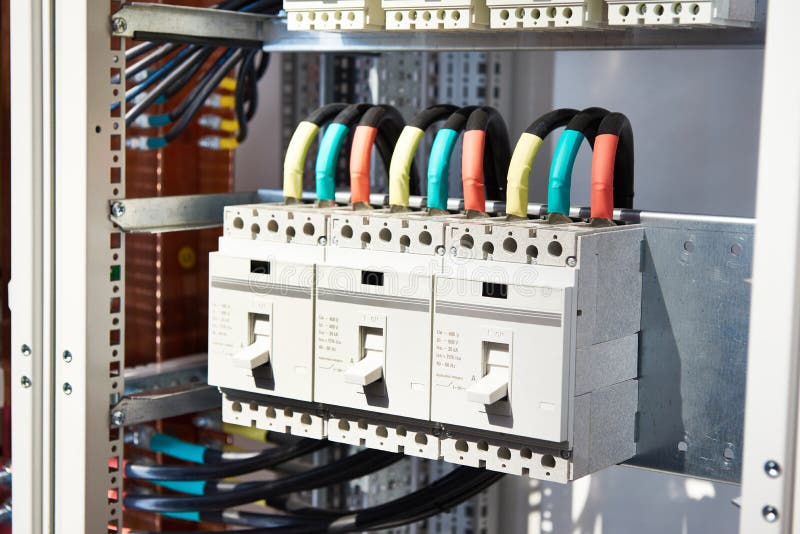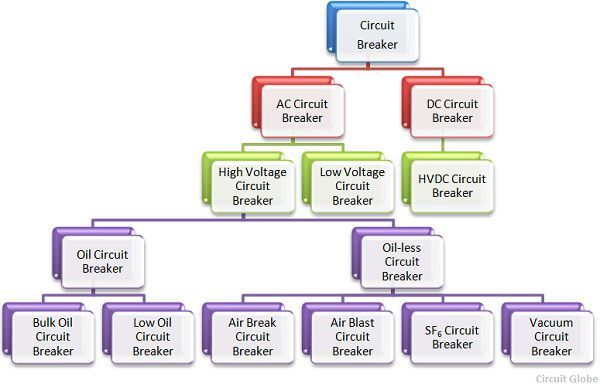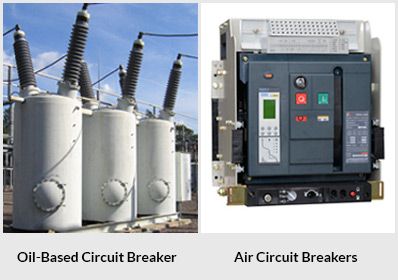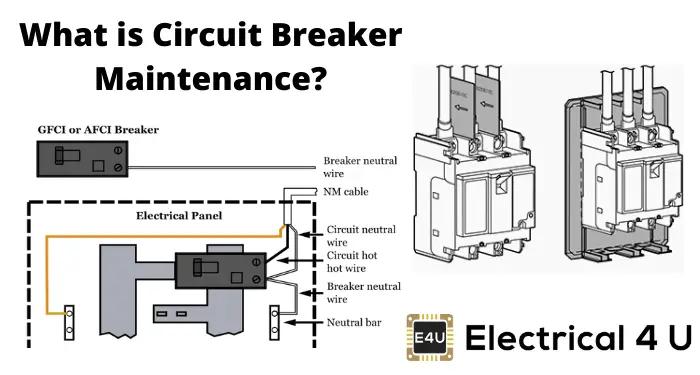Industrial Circuit Breaker Guide: Selection, Applications & Maintenance

1. What Is an Industrial Circuit Breaker?
An industrial circuit breaker is a critical electrical protection device designed to interrupt the flow of current in industrial electrical systems when faults such as overloads, short circuits, or ground faults occur. It acts as a safety barrier, preventing equipment damage, electrical fires, and potential hazards to personnel in industrial settings. These robust devices are engineered to handle high currents, ranging from hundreds to thousands of amperes, and are built with durable materials to withstand the rigorous conditions of factories, power plants, and heavy-duty facilities.
The differences between industrial and residential breakers are significant, stemming from their distinct application environments. Industrial circuit breakers are designed for much higher voltage and current ratings compared to residential ones. Residential breakers typically handle up to 240 volts and 200 amps, while industrial models can operate at voltages exceeding 1000 volts and currents up to 6300 amps or more. Another key difference lies in their construction: industrial breakers are built to resist vibrations, extreme temperatures, dust, and moisture—common in industrial facilities. Residential breakers, on the other hand, are simpler in design, intended for stable, low-stress home environments with minimal exposure to harsh elements.
2. Key Types of Industrial Circuit Breakers

Air Circuit Breaker (ACB) Overview
Air circuit breakers (ACBs) use compressed air to extinguish arcs formed during circuit interruption. They are widely used in low-voltage industrial systems with voltages up to 1000V and currents ranging from 630A to 6300A. ACBs are known for their high breaking capacity, making them suitable for main distribution boards in factories, data centers, and large commercial buildings. Their modular design allows for easy maintenance and expansion, and they often come with advanced features like adjustable trip settings and auxiliary contacts for remote monitoring.
Vacuum Circuit Breaker (VCB) in Industrial Use
Vacuum circuit breakers (VCBs) utilize a vacuum as the arc quenching medium, which offers excellent insulation properties. They are ideal for medium-voltage applications (up to 36kV) and are commonly found in power transmission and distribution systems, as well as industrial plants with high-voltage requirements. VCBs have a long service life, require minimal maintenance, and are environmentally friendly since they don't use oil or gas for arc extinction.
Molded Case Circuit Breaker (MCCB) for Heavy Loads
Molded case circuit breakers (MCCBs) are enclosed in a molded plastic housing, providing protection against dust, moisture, and physical damage. They are designed for low to medium voltage applications (up to 1000V) and can handle currents from 10A to 2500A, making them suitable for protecting heavy loads in industrial machinery, motor control centers, and distribution panels. MCCBs offer adjustable trip settings, allowing for customization based on specific load requirements, and are available in a variety of sizes and configurations to meet different installation needs.
3. How to Select the Right Industrial Circuit Breaker

Factors to Consider: Voltage, Current & Breaking Capacity
When selecting an industrial circuit breaker, the first factors to consider are the voltage and current ratings of the electrical system it will protect. The breaker's voltage rating must match or exceed the system voltage to ensure safe operation. Similarly, the current rating should be sufficient to handle the maximum continuous current of the circuit, with a margin of safety to account for temporary overloads. Breaking capacity, or the maximum current the breaker can safely interrupt, is another critical factor. It must be greater than the prospective short-circuit current at the point of installation to prevent damage to the breaker and the system in the event of a short circuit.
IEC vs. UL Standards for Industrial Circuit Breakers
Understanding the difference between IEC (International Electrotechnical Commission) and UL (Underwriters Laboratories) standards is essential when selecting an industrial circuit breaker, especially for international projects. IEC standards are widely adopted in Europe, Asia, and other parts of the world, while UL standards are prevalent in North America. The main differences lie in testing methods, performance requirements, and marking. For example, IEC breakers are tested for short-circuit breaking capacity at different power factors, while UL breakers are tested for interrupting rating at specific voltages. It's important to choose a breaker that complies with the relevant standards for the region where it will be used to ensure compatibility and safety.
Choosing Circuit Breakers for Harsh Environments
In harsh industrial environments, such as those with high temperatures, humidity, dust, vibration, or corrosive substances, special considerations must be taken when selecting a circuit breaker. Look for breakers with rugged enclosures that provide protection against these elements, such as NEMA 4X or IP66 ratings for water and dust resistance. For high-temperature environments, choose breakers with a wide operating temperature range, typically up to 60°C or higher. Vibration-resistant breakers are essential in applications such as manufacturing plants with heavy machinery, as they can withstand the constant shaking without malfunctioning. Additionally, corrosive environments may require breakers with stainless steel components or special coatings to prevent rust and degradation.
4. Applications of Industrial Circuit Breakers in Electrical Systems

Industrial Panel Boards and Circuit Protection
Industrial panel boards serve as the central distribution point for electrical power in industrial facilities, and industrial circuit breakers are a key component of these panels. They are used to protect individual circuits within the panel, preventing overloads and short circuits from affecting the entire electrical system. In industrial panel boards, a combination of MCCBs and ACBs is often used, with MCCBs protecting individual branch circuits and ACBs serving as the main breaker for the panel. This configuration provides reliable and selective protection, ensuring that only the affected circuit is disconnected in the event of a fault, minimizing downtime and disruption to operations.
Breakers for Manufacturing, Utilities & Power Plants
Manufacturing facilities rely on industrial circuit breakers to protect a wide range of equipment, including motors, pumps, conveyors, and processing machinery. These breakers must handle the high starting currents of motors and the varying loads of manufacturing processes. In utilities, such as water and wastewater treatment plants, circuit breakers are used to protect pumps, compressors, and other electrical equipment, ensuring reliable operation of critical infrastructure. Power plants, both fossil fuel and renewable energy, require high-voltage circuit breakers, such as VCBs, to protect generators, transformers, and transmission lines, ensuring the safe and efficient generation and distribution of electricity.
Circuit Breakers in Automation and Control Panels
Automation and control panels are essential in modern industrial facilities, enabling the automation of manufacturing processes and the control of various equipment. Industrial circuit breakers play a vital role in these panels, protecting the sensitive electronic components, such as programmable logic controllers (PLCs), drives, and sensors, from electrical faults. MCCBs are commonly used in automation panels due to their compact size, adjustable trip settings, and reliable performance. They provide protection against overloads and short circuits, ensuring the smooth operation of the automation system and preventing damage to expensive electronic equipment.
5. Common Issues with Industrial Circuit Breakers

Why Industrial Circuit Breakers Trip Frequently
Frequent tripping of industrial circuit breakers is a common issue that can disrupt operations and indicate underlying problems in the electrical system. One of the main reasons is overload, where the current flowing through the circuit exceeds the breaker's rated current. This can occur due to adding too many devices to the circuit, a malfunctioning piece of equipment drawing excessive current, or a temporary surge in current during startup. Short circuits are another cause, which happen when live wires come into contact with each other or with a ground, creating a path of low resistance and causing a large current to flow. Ground faults, where a live wire comes into contact with a grounded surface, can also cause breakers to trip. Additionally, worn or damaged breaker components, such as contacts, can lead to frequent tripping.
Troubleshooting Overloads, Short Circuits, and Faults
When troubleshooting overloads, start by checking the total current draw of the circuit using a clamp meter. If it exceeds the breaker's rating, identify and remove any unnecessary devices or replace the breaker with a higher-rated one if the circuit is designed to handle it. For short circuits, inspect the wiring for damage, such as frayed or exposed wires, and check for loose connections. Faulty equipment can also cause short circuits, so disconnect each device one by one to find the source. Ground faults can be detected using a ground fault circuit interrupter (GFCI) tester or by inspecting for damaged insulation that may be allowing current to leak to ground. In some cases, a professional electrician may be needed to use specialized equipment to locate and repair the fault. It's important to address these issues promptly to prevent damage to the electrical system and ensure the safety of personnel.
6. Industrial Circuit Breaker Maintenance & Testing

Routine Maintenance Tips for MCCB/ACB/VCB
Routine maintenance is essential to ensure the reliable operation of industrial circuit breakers, including MCCBs, ACBs, and VCBs. For MCCBs, regular maintenance includes cleaning the exterior and interior of the breaker to remove dust and debris, inspecting the contacts for wear and damage, and checking the operation of the trip mechanism. Lubricate moving parts as needed to ensure smooth operation. For ACBs, in addition to the above, inspect the air system for leaks, check the pressure settings, and clean or replace the air filters. VCBs require checking the vacuum interrupters for leaks, inspecting the operating mechanism, and ensuring proper alignment of the contacts. It's also important to keep records of maintenance activities, including the date, type of maintenance performed, and any issues found.
How to Test an Industrial Circuit Breaker
Testing industrial circuit breakers is crucial to verify their performance and ensure they will operate correctly in the event of a fault. For MCCBs and ACBs, common tests include the trip test, where the breaker is manually tripped to ensure the mechanism works properly, and the insulation resistance test, which measures the resistance between the breaker's contacts and the ground to check for insulation breakdown. VCBs require additional tests, such as the vacuum integrity test to ensure there are no leaks in the vacuum interrupters, and the contact resistance test to check the condition of the contacts. These tests should be performed by qualified personnel using calibrated equipment according to the manufacturer's recommendations.
Lifecycle & Replacement Considerations
The lifecycle of an industrial circuit breaker depends on factors such as usage, operating conditions, and maintenance practices. Generally, MCCBs and ACBs have a lifespan of 10-15 years, while VCBs can last 20 years or more with proper maintenance. However, harsh environments, frequent tripping, and lack of maintenance can shorten their lifespan. Signs that a breaker may need replacement include frequent tripping, difficulty resetting, visible damage to the housing or contacts, and failure to pass testing. When replacing a breaker, it's important to choose a model that is compatible with the electrical system and meets the same or higher standards as the original. It's also a good idea to consider upgrading to a newer, more efficient model that offers advanced features, such as smart monitoring capabilities.
7. Smart and Remote-Controlled Industrial Breakers
Benefits of Smart Industrial Circuit Breakers
Smart industrial circuit breakers offer a range of benefits over traditional breakers, making them increasingly popular in modern industrial facilities. One of the main advantages is remote monitoring and control, allowing operators to check the status of the breaker, such as current, voltage, and trip history, from a central location using a computer or mobile device. This enables proactive maintenance and quick troubleshooting, reducing downtime. Smart breakers also provide real-time data on energy consumption, helping facilities optimize energy usage and reduce costs. They can be programmed to automatically trip under specific conditions, such as overloads or high temperatures, and can send alerts to operators when a fault occurs. Additionally, smart breakers can integrate with other building management systems, such as energy management systems and fire alarm systems, for enhanced safety and efficiency.
Integration with SCADA and Energy Monitoring Systems
Integration with SCADA (Supervisory Control and Data Acquisition) systems allows smart industrial circuit breakers to be part of a larger industrial control system, providing operators with a comprehensive view of the electrical system and enabling remote control of breakers from the SCADA interface. This integration facilitates centralized monitoring and control of multiple breakers across a facility, improving operational efficiency and reducing the need for on-site personnel. Energy monitoring systems can also be integrated with smart breakers to collect and analyze energy consumption data, identifying areas where energy can be saved and optimizing the use of electrical resources. By combining the data from smart breakers with other systems, facilities can make more informed decisions about energy management, maintenance, and system upgrades.
8. Conclusion: Optimizing Safety with the Right Industrial Breaker
Industrial-grade circuit breakers are critical components in industrial electrical systems, providing essential protection against overloads, short circuits, and other electrical faults. They play a vital role in ensuring the safety of personnel, preventing equipment damage, and minimizing downtime in industrial facilities. By selecting the right industrial circuit breaker based on factors such as voltage, current, breaking capacity, and application environment, and by following proper maintenance and testing procedures, facilities can optimize the safety and reliability of their electrical systems.
Before finalizing a circuit breaker purchase, it's important to go through a checklist to ensure you're making the right decision. This includes verifying that the breaker meets the required voltage and current ratings, has sufficient breaking capacity, complies with relevant standards (IEC or UL), is suitable for the application environment, and offers the necessary features. It's also advisable to consult with a qualified electrical engineer or supplier to get expert advice and ensure the breaker is compatible with the existing electrical system. By taking these steps, you can select an industrial circuit breaker that provides reliable protection and meets the specific needs of your facility.
9. YUANKY Industrial Circuit Breaker
YUANKY Industrial Circuit Breaker combines a sleek exterior with rugged, industrial-grade internal components. Crafted via advanced production lines and rigorously tested under ISO 9001:2000 standards, it delivers reliable overload and short-circuit protection across types like MCCBs. Procurement partners, we invite you to explore our range—your trusted choice for robust electrical safety.
9. FAQ
What is an industrial circuit breaker?
An industrial circuit breaker is a heavy-duty protective device designed for high-current electrical systems—far more robust than residential models—capable of interrupting overloads, short circuits, and faults to protect gear and personnel.
How do I select the right industrial breaker?
Key parameters include:
l Voltage & current rating matched to system specs
l Breaking capacity (Icu/Ics) ≥ potential fault current
l Trip curve and type (thermal-magnetic, electronic) fit to load dynamics
l Suitable for environment (temperature, humidity, dust)
l Compliance with standards (IEC, UL)
What are the main types of industrial circuit breakers?
Common types include:
l MCCB (Molded Case) for low-voltage heavy loads
l ACB (Air Circuit Breaker) for low-voltage power distribution
l VCB (Vacuum) for medium-voltage industrial systems
l SF₆ breakers for high-voltage transmission up to 800 kV

















